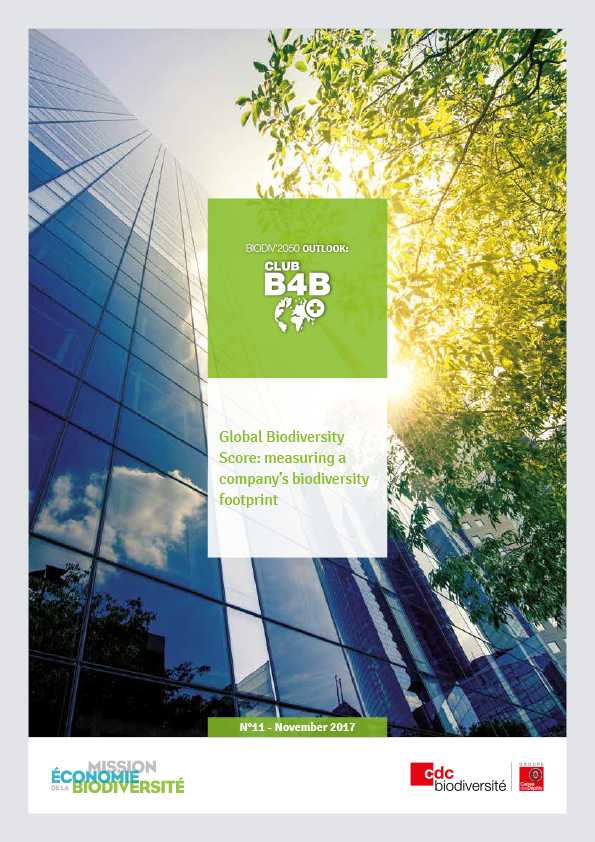Cahier de Biodiv’2050 n°11

Sommaire de la publication
|
INTRODUCTION 1. Origins of the project
2. Search for complementarity with national and international initiatives on the issue of biodiversity footprint
3. Global Biodiversity Score: objectives, required characteristics and general presentation
|
4.Global Biodiversity Score: objectives, required characteristics and general presentation
5. Global Biodiversity Score: objectives, required characteristics and general presentation
6. Global Biodiversity Score: objectives, required characteristics and general presentation
CONCLUSION AND PROSPECTS GLOSSARY |
RÉSUMÉ
Global Biodiversity Score: measuring a company’s biodiversity footprint
Unlike climate change mitigation which is gradually mainstreamed into business strategies and activities, biodiversity still struggles to be recognized as a major issue for businesses and financial institutions due to its complexity. Yet relations between business and biodiversity are on the verge of a major paradigm shift.
At a time when the private sector must step up and play its full role in helping to achieve the objectives laid down by the international community in terms of stopping biodiversity loss, CDC Biodiversité has come up with an innovative methodology that enables companies from all sectors to quantify their impacts on ecosystems by using a single indicator. This indicator, named the Global Biodiversity Score (GBS), is expressed in surface area of destroyed pristine natural areas. The methodology makes it possible to quantify a business’s biodiversity footprint all the way along the value chain.
It has been developed jointly with CDC Biodiversité’s B4B+ Club (Business for Positive Biodiversity Club) and seeks to help drive the transformation of interactions between economic stakeholders and the living environment in a world in which integrating natural capital – and biodiversity in particular – into decision-making processes has taken on the utmost urgency.
Édito

Laurent Piermont
Former President of CDC Biodiversité
